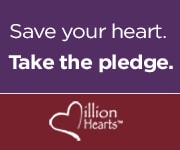Risk factors are not the
immediate cause for a disease, it is a promoter, initiator, and the trigger for
the occurrence of the disease (Bonomo & Araujo, 2012). As for arrhythmia,
there are a number of cause for it to happen for instance, having coronary
artery disease, electrolyte imbalance in the body (lack or an excess of sodium
and potassium), changes in heart muscle, injury from heart attack and healing
after heart surgery (WEbMD, 2015). The factors leading to these causes are the
risk factors for arrhythmia. The risk factors are the socioeconomic status,
social support, age, gender, Type A Behavior Pattern (TABP), stress, Tako-Tsubo
syndrome and depression (Rozanski, Blumenthal & Kaplan, 1999).
Socioeconomic Status
(SES)
Socioeconomic status
determined the education, behavior and the cleanliness of the daily life.
According to a research done by Rozanski in 1999, low socioeconomic status has
a correlation with unhealthy behaviors and this increases the risk of having
coronary artery disease, which is one of the cause of arrhythmia. In addition
to that, low income restrict the health services they can get, lack of
education resulted in difficulties to adhere medical prescription and lack of
the consumption of nutritious foods. All these increases the potential of
getting a coronary artery disease and also electrolyte imbalance in the body,
in which both are the causes of arrhythmia.
Social Support
A population survey done
in America found that a significant relationship between coronary artery
disease and social support (Frasure-Smith & Lasperance, 1998). Social support
is the support you receive from friends, family and special people that care
for you (Towey et al.,
2013) and inhibition
from social support may lead to the causing factors of arrhythmia. Another
research done by Berkman and Syme (1979) reported that the number of social
ties correlates with the mortality rate and the mortality caused by coronary
artery disease was significantly related to the lack of social support. Social
support prevent the engagement of risky behaviors and biologically, it can decrease
the arterial pressure and cardiac response during stress (Bonomo & Araujo,
2012).
Age
Age is the major risk
factor for arrhythmia. This is because there is a decline in cardiac
functionality throughout the physiological aging (Bonomo & Araujo, 2012).
It was reported that out of a sample between the ages of 60 to 85 years old,
80% of them had ventricular arrhythmia and 88% of them had supraventricular
arrhythmia (Bonomo & Araujo, 2012).
Gender
Both male and female
have equal risk for arrhythmia but male are more prominent in the analysis of
most researches (Eaker, 1998). This is due to the biological differences
between genders in terms of hormonal composition, genetic inheritance and the
cerebral structure and functions. As for females, the pre-menopausal effect of
estrogen protect them from the risk of having coronary diseases (Bonomo &
Araujo, 2012). Thus protecting them from arrhythmia too.
Type A Behavior Pattern
(TABP)
Type A behavior pattern
is a set of behaviors of a person when confronting a challenging event (Bonomo
& Araujo, 2012). The characteristics are hostility, competitiveness,
impatience, rapidity and lack of attention to fatigue and sickness (Rozanski,
Blumenthal & Kaplan, 1999). People with this behavior pattern experiences
stress and thus affecting their cardiac activity and increases the arterial
pressure. Their inattention towards fatigue may also cause a biological haywire
such as platelets aggregation and intense discharge of the hormone
catecholamine (Bonomo & Araujo, 2012). Platelets accumulation may cause the
formation of plague in the artery which leads to coronary artery disease
(Brannon, Feist & Updegraff, 2014) and the hormone catecholamine increases
the heart beat in which will cause arrhythmia.
Stress
Stress is another major
risk factor for arrhythmia. The frequency of stressful events determined the
risk of heart diseases (Frasure-Smith & Lasperance, 1998). For example, the
stress from work will activate the sympathetic nervous system and promote the
increment of cardiac rate and arterial pressure, and lower the ejection of
blood from the heart (Bonomo & Araujo, 2012). This will interrupts the
cardiac activity and functionality and eventually cause arrhythmia.
Tako-Tsubo Syndrome
(Broken Heart Syndrome)
Tako-Tsubo syndrome
which is caused by the pressure in the apex of the ventricle of the heart due
to two factors; hormonal imbalance and stressful events (Bonomo & Araujo,
2012). This causes a person to have a symptom of chest pain. This syndrome
generally affects women after menopause who undergo some stressful episodes.
Continual application of pressure on the ventricle causes irregular heart beat
which is arrhythmia (Bonomo & Araujo, 2012).
Depression
Depression is the
feeling of sadness, loneliness, hopelessness, guilt and shame (Kubzansky &
Kawachi, 2000). Depression causes hormonal imbalance and inhibition from social
support thus leading its way to coronary and cardiac problems. A study by Lane
(2005) reported that 16% of the
patients diagnosed with moderate and severe depression experienced cardiac
events and he found that depressed patients have two times higher risk of
getting


0 comments:
Post a Comment